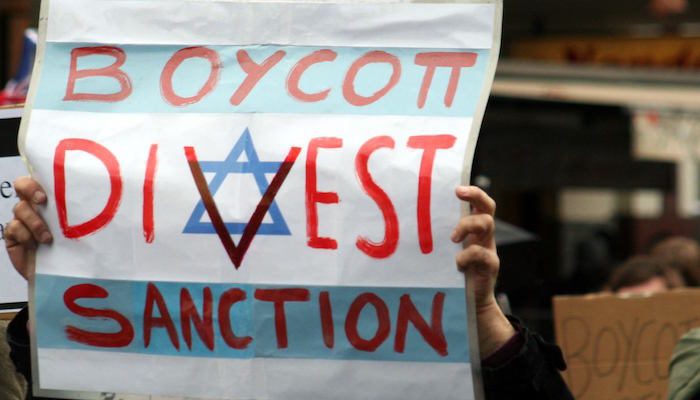
Boycott! The Academy and Justice for Palestine
By Sunaina Maira
Oakland, CA: University of California Press, 2018
This book describes and analyses the ongoing boycott of state affiliated Israeli educational facilities. This effort is an element of the Palestinian Campaign for Academic and Cultural Boycott of Israel (PACBI). It was initiated in 2004 as part of an even broader Boycott, Divestment and Sanctions movement directed against Israel. Most of the literature describing these multifaceted efforts has been on a journalistic level, or aims to popularize or demonize the boycotts depending on which side you take. However, the author of this book, a professor at the University of California, Davis, seeks to describe the academic boycott in a scholarly fashion, thus giving insight to the initiative in a broader, analytical fashion.
The historical background to the academic boycott is the Israeli-Palestinian Conflict and the ongoing 70 plus years of Israeli absorption of Palestinian land. The author justifiably describes this as process of settler colonialism that, significantly, contradicted the decolonization and liberation process experienced by the non-Western world after 1945. The Zionists involved in the conquest of Palestine recognized this incongruity. In order to get around it, they proclaimed themselves to be a people in need of liberation. While Europe’s Jews were arguably in need of freedom from the ravishes of Western anti-Semitism, seeing their deliverance in a process of settler colonialism, which was at that very moment being disavowed by much of the world, was an historically tragic mistake. Nonetheless, by 1948, the Zionist claim that Europe’s Jews could only be liberated in Palestine was accepted for political and racial reasons by enough members of the newly formed United Nations to make Zionist Israel into the “exception” to the rule of decolonization.
The author shows that the history of subsequent Palestinian resistance is still an evolving one, going from localized violent resistance against overwhelming violent occupation, to a worldwide non-violent boycott of Israel. This latter approach is played out on a field where there are precedents for victory (such as apartheid South Africa). It is a sign of that positive potential that, as the author notes, the worldwide boycott aspect of this fight has evoked a predictable backlash from the Israelis and their allies, both in and out of Western governments. It is this backlash that has caused both the Palestinians and their allies to broaden the boycott movement by implementing “cross racial and cross movement alliances” (p. 18) with a broad array of liberation movements – among which are African American, gay rights and feminist movements. And, central to the author’s argument, an evolving movement to liberate the academy itself from administrative, donor and state forces that would censor and deform the delivery of knowledge (beginning with knowledge of the Zionist theft of Palestinian land and rights) on the campuses of the United States and the West more broadly.
As the author lays out the case that the academic boycott is now a central element in a multi-dimensional liberation movement, we are confronted with one more effort at colonial exceptionalism on the part of Israel – the Zionist claim to the exclusive right to academic freedom. In other words, the Zionist argument against PACBI is that the academic boycott infringes on the academic freedom of Israelis. But, of course, the oppressor cannot legitimately claim the rights he denies the oppressed. Those institutions that are subject to this boycott are complicit in shutting down the academic freedom of the Palestinians. As the author asserts, “in fact the boycott aims to enlarge academic freedom – for the oppressed population” (p. 62). The Zionist insistence that there is no “oppressed population” is not an argument anyone, outside their own insular environment, still believes.
In conclusion, it is important to note that this book is well written and brief enough (145 pages of text) to be easily read and studied within a reasonable time. For those daring instructors out there, it is a perfect candidate for classroom use. It clearly explains where this increasingly popular and powerful movement of our own day came from, and discusses in a thought-provoking way, where it is now going.